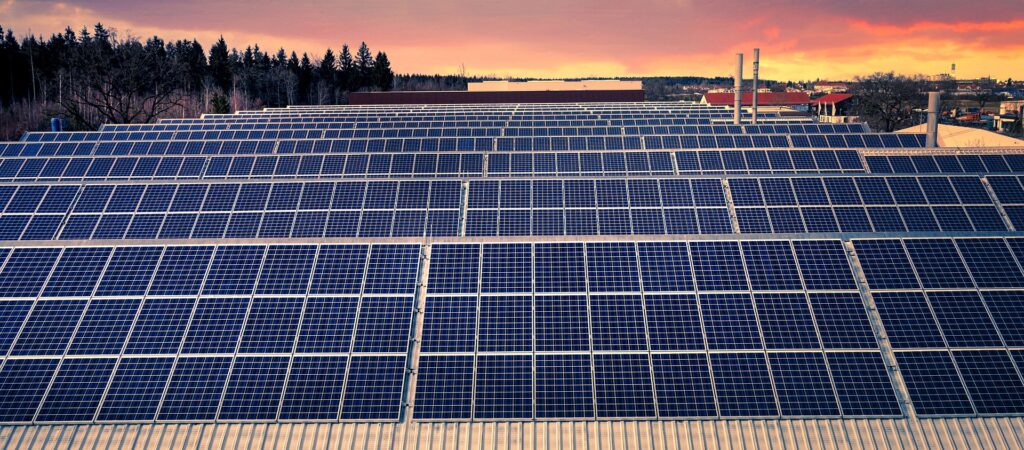An important mechanism to meeting renewable energy targets are power purchase agreements (PPA). While a PPA can take multiple forms, be it physical or virtual, a PPA is ultimately a long-term contract between a provider of electricity, such as wind and solar generated, and a buyer of said electricity, such as utilities or large businesses.
The third quarter saw an increase in renewable PPA prices across North America, with LevelTen Energy’s P25 National Index increasing 14.7%, 19.4%, and 19.1% year-over-year for solar, wind, and overall, respectively. In their North American Q3 2021 PPA Price Index report, LevelTen Energy attributed the rise to multiple factors such as increased demand, supply chain shortages, and regulatory challenges [i].
From a demand standpoint, demand for PPAs is rising in North America in part due to increasing corporate PPAs as firms seek to meet renewable electricity targets. Within the space large technology firms such as Microsoft dominate due to their aggressive sustainability goals and rising electricity consumption associated in part with data centers [ii, iii, iv]. For example, globally, technology firms such as Microsoft and Facebook saw their electricity demands increases upwards of 17% and 39% respectively from 2019 to 2020 [v, vi]. With heightened PPA demand and limited supply, upward pressure is placed on the PPA market, which also can enable better deal terms for project developers.

From a supply chain standpoint, renewables such as solar PV and wind have not been immune to the supply chain effects of the COVID-19 pandemic. According to analysis from Rystad Energy, 2021 has seen heightened PV module costs due to component inflation and manufacturing costs; by mid 2021 prices had risen nearly 50% in a year [vii]. Additionally pandemic related bottlenecks have seen an unprecedented rise in shipping costs, which further drives up costs [vii]. Similarly, in August, analysis from Wood Mackenzie noted that wind turbine prices could “increase by up to 10% over the next 12 to 18 months due to increases in commodity prices, logistics costs, and coronavirus-related challenges” [viii]. In either case, heightened costs impact capex and ultimately project economics, putting upward pressure on renewable PPA prices.
While heightened demand and supply chain issues have contributed to rising PPA prices, reporting from LevelTen Energy highlights that permitting and grid interconnectivity issues are viewed by project developers as the top factors with regards to impeding development; in the context of achieving the U.S. Department of Energy’s goal of meeting 40% of the nation’s electricity demand with solar energy by 2035 [i, ix]. The regulatory underpinnings of the permitting process slows, or in some cases even thwarts, development as project developers have to navigate myriad of varying regulations and regulatory bodies [i, x]. Furthermore, grid interconnectivity issues place a burden on developers, as they are often faced with the prospect of paying for grid upgrades to enable connection even though said upgrades can have system-wide benefits; a fact that seems to contradict the beneficiary pays principle [xi, xii].
In addition to direct costs associated with grid upgrades, the interconnection queue is problematic for developers as it leads to further delays and heightens costs. According to 2021 report from the Lawrence Berkeley National Laboratory, over 755 gigawatts (GW) of generator capacity (~680 GW of which was zero carbon, dominated by wind and solar) were stuck in queue at the end of 2020 [xiii]. Furthermore, the report shows that the median time spent in queue for solar projects that reached commercialization more than tripled from 2010 to 2020 [xiii]. The collective effect is that in addition to increasing PPA prices, these factors bottleneck renewable electricity development.
While there is no silver bullet to address these concerns and speed up the path to a cleaner energy future, a possible first step might be to address the inadequacies of the current electrical grid, by centrally planning to upgrade transmissions reflective of the future generation mix; a grid where generation is located further from loads. Doing so would reduce the burdened of grid upgrades placed on developers, which could lower development costs and help address rising PPA prices long-term. The benefits of such approach have been demonstrated with projects such as the Texas Competitive Renewable Energy Zones (CREZ), which attracted billions of dollars in wind and solar development and is credited with upwards of 18,000 megawatts (MW) of new capacity [xiv]. While this is just one example, it points to the fact that investments can be made to facilitate the development of renewable energy resources, which will be important for the U.S. to meet its ambitions renewable electricity targets.
PPAs are an important tool for increasing the share of renewable electricity in the grid, however rising costs present a potential impediment. While current prices seem unlikely to derail development, it is essential that policy is aimed at addressing the root causes of rising PPA prices.
- https://www.leveltenenergy.com/post/q3-2021
- https://www.wsj.com/articles/amazon-and-other-tech-giants-race-to-buy-up-renewable-energy-11624438894
- https://www.forbes.com/sites/jamesconca/2021/05/24/big-tech-companies-look-to-clean-energy-to-slake-their-enormous-thirst/?sh=3f336ba95615
- https://www.iea.org/commentaries/5-ways-big-tech-could-have-big-impacts-on-clean-energy-transitions
- https://query.prod.cms.rt.microsoft.com/cms/api/am/binary/RWyG1q
- https://sustainability.fb.com/wp-content/uploads/2021/06/2020_FB_Sustainability-Report-3.pdf
- https://www.rystadenergy.com/newsevents/news/press-releases/most-of-2022s-solar-PV-projects-risk-delay-or-cancelation-due-to-soaring-material-and-shipping-costs/
- https://www.woodmac.com/press-releases/wind-turbine-prices-to-rise-by-up-to-10/
- https://www.energy.gov/articles/doe-releases-solar-futures-study-providing-blueprint-zero-carbon-grid
- https://www.stoel.com/legal-insights/special-reports/the-law-of-solar/sections/permitting-and-land-use
- https://acore.org/wp-content/uploads/2021/10/Just_and_Reasonable.pdf
- https://cleanenergygrid.org/wp-content/uploads/2021/01/Disconnected-The-Need-for-a-New-Generator-Interconnection-Policy-1.pdf
- https://eta-publications.lbl.gov/sites/default/files/queued_up_may_2021.pdf
- https://acore.org/wp-content/uploads/2020/04/Corporate-Demand-and-Transmission-January-2018.pdf